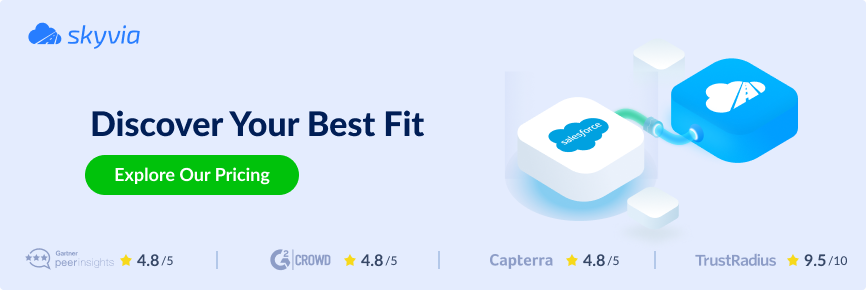What’s DWH? If you google or ask chartGPT, the definition will be like “…a data warehouse is a centralized repository designed to store integrated data from multiple, often disparate, sources…” Let’s dive deeper and review data warehousing best practices and the benefits of usage.
Data warehouses started in the 1990s as alternatives to traditional operational databases to solve their complex queries and analytics performance limitations. The evolution of DWHs is impressive – from OLAP (Online Analytical Processing) technologies to Big Data (2010s) integration and cloud-based solutions and ML, offering scalability and decreasing costs.
Here are a few reasons why DWH is a helper in the modern business world:
- Data is in a centralized data repository.
- You can analyze large volumes of historical data.
- BI and reporting abilities are ready to use.
- You’re armed to make a data-driven decision.
Table of Contents
- Best Practices in Data Warehousing
- Advantages of Cloud-Based Data Warehousing Solutions
- Key Factors to Consider in Data Warehousing
- The Role of Skyvia Data Integration in Data Warehousing
- Conclusion
Best Practices in Data Warehousing
Data warehousing has become extremely popular in daily business analytics; its market is growing fast and is expected to reach over $30 billion by 2025.
Here are the data warehousing best practices to help companies enhance BI and data analytics.
Involving Key Stakeholders and Defining User Roles
This step is the first for DWH’s successful implementation and further management. It ensures that the data warehouse aligns with business objectives to be used effectively throughout the company.
The business executives, department heads, IT leaders, data analysts, and end-users interact with DWH, so it must fit their needs. Communication according to their expectations and feedback is crucial in this case.
With RBAC (Role-Based Access Control), you’ll provide data security and appropriate user access depending on business usage. For instance, the data analytics dashboard will differ from the business user’s one because of different goals.
Implementing Effective Data Governance Strategies
The data governance framework helps define the relationships between people, processes, and technologies. It develops and implements clear policies and standards for data management, establishing roles like data owners, stewards, and custodians to oversee data quality control, security, and compliance and creating a data-driven culture based on automating governance processes.
Choosing the Right Data Warehouse Schema Design
A DWH schema is a logical description of the entire database structure used in a data warehouse. It defines the relationships between different data types and impacts how data is stored, organized, and retrieved. A well-designed schema optimizes data retrieval and analysis and ensures that the data warehouse aligns with the business’s analytical and reporting needs.
The list below shows the schema types and their abilities:
- Star Schema: Simple, with a central fact table connected to dimension tables. It fits for simple to medium-complexity queries and is easy to use.
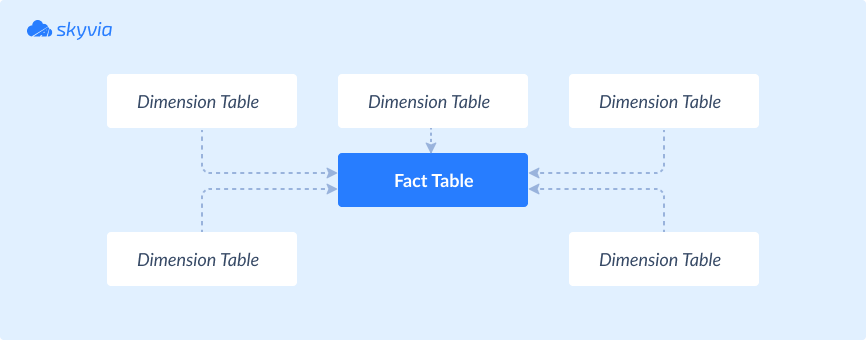
- Snowflake Schema: Dimension tables here are divided into sub-dimension tables. It’s suitable for complex queries but is more complicated to maintain.
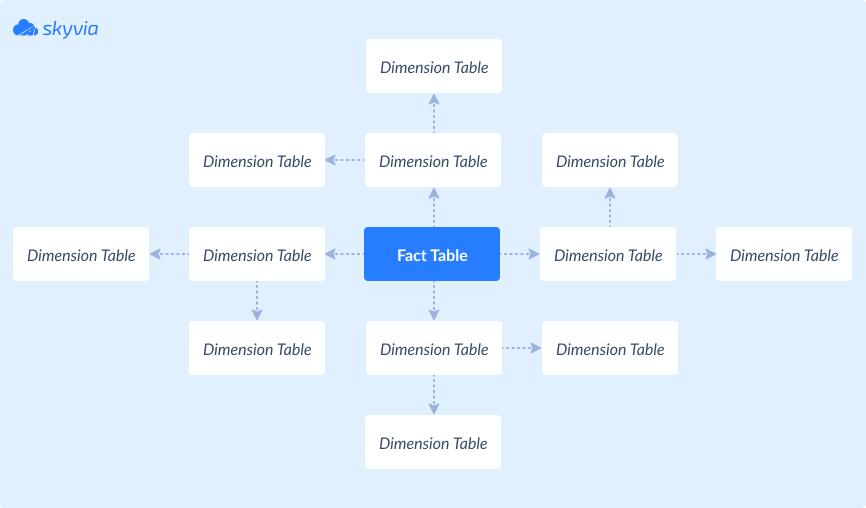
- Galaxy Schema (or Fact Constellation): Consists of multiple fact tables that share many dimension tables. It suits complex businesses with varied reporting needs across different subject areas.
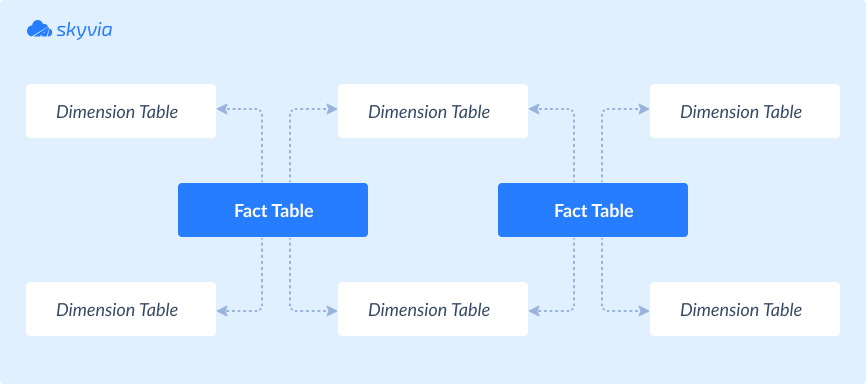
Before selecting the schema type, define your current and future business requirements, like possible changes in increasing data volumes and structures.
Consider that more normalized schemas like snowflake maintain higher data integrity but at the cost of query complexity. At the same time, less normalized schemas, like a star, can be more redundant in some cases, but depending on reporting needs, it might be acceptable.
Utilizing ELT (Extract, Load, Transform) Over Traditional ETL
Modern DWHs handle massive amounts of data and complex processing tasks. ELT shifts the transformation workload to the data warehouse, providing users with advantages like scalability, cost-saving, speed, efficiency, data transformation flexibility, data integrity maintenance, etc. Let’s see the details:
- Scalability: A common scenario for ELT is big data projects. Such scenarios are more scalable for handling large data volumes and eliminate the need for a separate transformation layer, which can become a bottleneck in traditional ETL.
- Cost saving: By leveraging the computational power of cloud data warehouses, ELT reduces the need for additional processing and transformation infrastructure.
- Speed and efficiency: In ELT, data is loaded into the warehouse immediately after extraction, making it available faster. Transformation happens after the data is already in the warehouse, reducing the time to insight. At the same time, modern data warehouses perform parallel processing, allowing for more efficient and faster data transformations within the warehouse.
- Data transformation flexibility: ELT provides ad-hoc transformation abilities. Since the raw data is already in the warehouse, you may transform it multiple times and in different ways to suit various analytical needs.
- Data integrity maintenance: Storing raw data in the warehouse before transformation helps maintain data integrity and provides a complete historical record.
Emphasizing Iterative Testing and Continuous Improvement
Develop small, well-defined task(s) in a short cycle, test it, get feedback from key stakeholders, and then improve it in a new iteration without any pain for end users. Emphasizing iterative testing and continuous improvement in a data warehousing environment ensures that the system remains effective, efficient, and aligned with business objectives. It optimizes performance, reduces risks, and fosters a culture of innovation and responsiveness to change.
Advantages of Cloud-Based Data Warehousing Solutions
The cloud-based DWHs are scalable, flexible, accessible from anywhere, easy to use, adaptable, and reconfigurable as business needs change. Let’s expand the list of their advantages.
- Dynamic Scaling: DWHs can scale up or down on demand, ensuring that you have the necessary resources during peak times and are not paying for unused capacity.
- Access and Data Sharing: Cloud-based solutions are accessible from anywhere with an internet connection, allowing data sharing with different departments and external partners.
- High Performance and Analytics Optimization: These platforms offer high-performance computing resources that efficiently handle large volumes of data and complex queries. They’re often optimized for analytics and big data processing, providing faster insights.
- Strong Security Measures and Compliance: They provide strong measures like encryption, identity management, and network security and comply with various regulations and standards, including HIPAA, GDPR, ISO 27001, etc.
- Advanced Analytics and Integration: Many cloud data warehouses have built-in analytics and business intelligence tools, allowing easy integration with other cloud-based services and applications.
- Pay-as-You-Go Pricing: With cloud DWHs, you typically pay only for the resources you use, which can be more cost-effective than the upfront and maintenance costs of an on-premises warehouse.
Key Factors to Consider in Data Warehousing
The table below displays the key factors businesses have to consider while creating and working with DWHs.
| Factor | Consideration |
|---|---|
| Aligning with Business Requirements and Goals | – Ensure the data warehouse aligns with overall business objectives and strategies. – Discover the specific data needs of different departments and how they will use the DWH. |
| Cost Considerations and Budget Management | – Consider the costs associated with the data warehouse’s implementation, maintenance, and scaling. – Evaluate the potential ROI (return on investment). |
| Evaluating Technical Capabilities and Technological Suitability | – Choose the database technology and BI tools that best fit your data warehousing needs. – Decide between cloud-based or on-premise solutions based on cost, scalability, and maintenance needs. |
| Ensuring Accessibility, Speed, and Efficiency | – Make the data warehouse accessible to non-technical users. – Provide training to users on how to effectively utilize the data warehouse. – Optimize for fast query performance to support business intelligence and analytics. – Use real-time data processing solutions. – Use ETL processes and seamless data integration for timely and accurate warehouse updating. |
| Planning for Scalability and Future Growth | – Ensure the system can scale up to increasing data volumes and user queries. |
The Role of Skyvia Data Integration in Data Warehousing
To “make friends” with DWH and apps like Salesforce, HubSpot, Mailchimp, etc., you need a fast, simple, and user-friendly solution that can replicate data from the app into DWH and update data into the app with a reverse ETL scenario. Skyvia fits these requirements entirely and a bit more. Let’s explore Skyvia’s data integration abilities in data warehousing in detail.
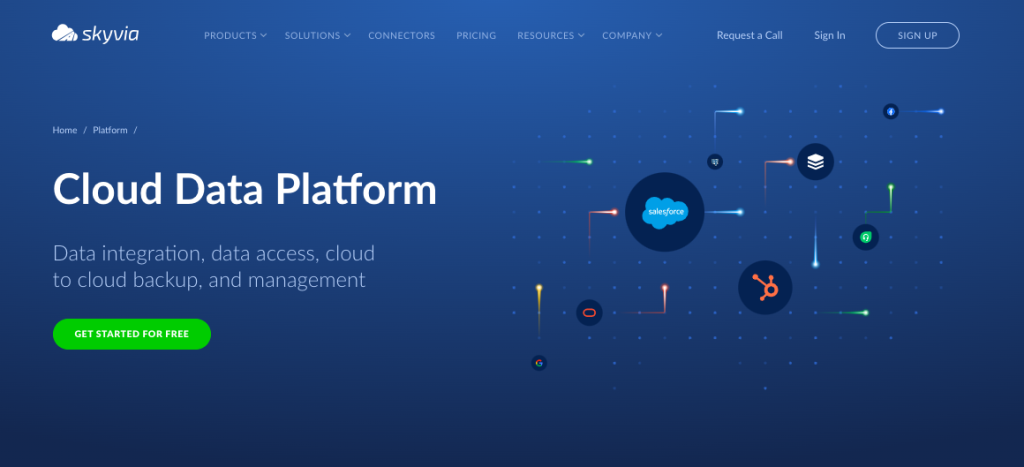
Skyvia is the universal, no-code cloud-based data management solution supporting a wide range of data integration scenarios of any complexity, including ETL, ELT, reverse ETL, data migration, one-way and bidirectional data sync, workflow automation, data sharing via REST API, backups for cloud apps, mapping, recovery, etc.
The app is simple to use, even for non-techs, and it saves you time and money for staff learning and additional coding. The tool connects to 180+ data sources, including databases, cloud services, and CRMs like Salesforce, which is crucial for gathering the disparate data needed for comprehensive data analytics.
You may use Skyvia for free or choose flexible pricing plans to feel the differences in how it works, offering your business more space for rolling. Skyvia’s pricing model is pay-as-you-go, ranging from $15/mo for the Basic to $399/mo for the Professional one. The Enterprise plan offers your business top performance.
Conclusion
Data warehousing is an essential part of the analytical process for every business, having a zoo of different services and needing a single source of truth. You must choose a good, trusted service that meets business requirements to make everything work like a clock. If the words to describe your company’s expectations in the DWH area are ‘accessibility,’ ‘simplicity,’ and ‘honest price,’ try Skyvia in action.
